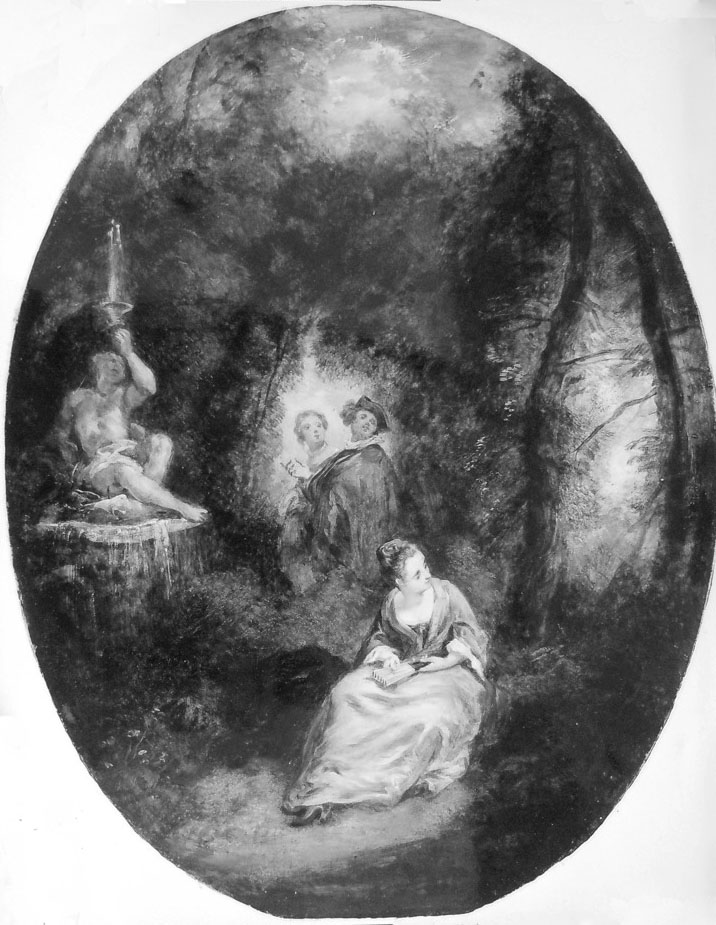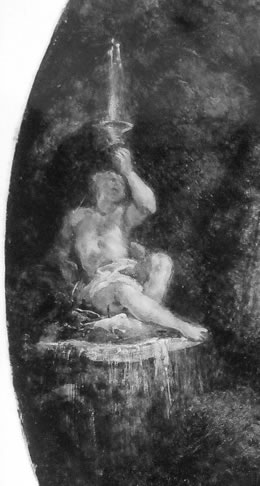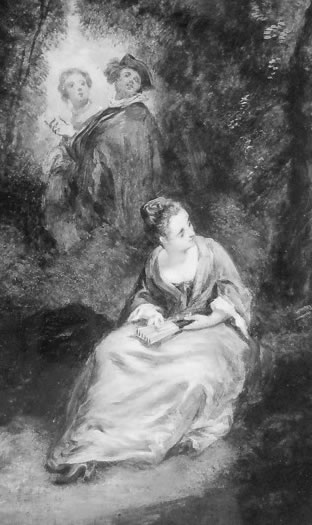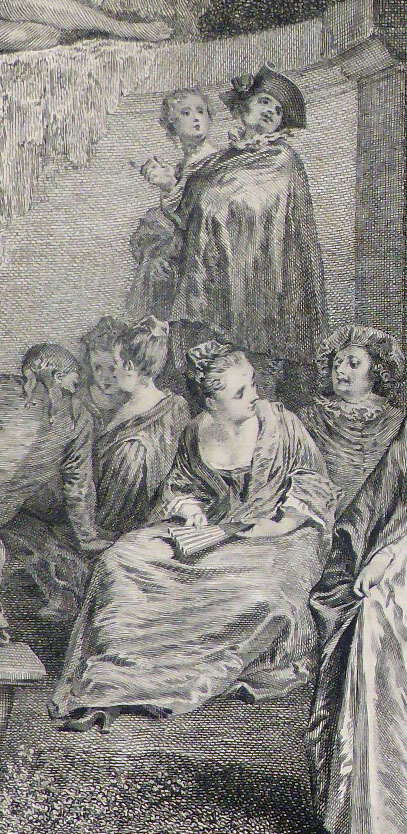
- Home Page
- Accepted
Paintings & Copies - Doubtful
Attributions - Doubtful Textual References
- Alternative
Titles - Collectors &
Museums - Bibliography
- Search Abecedario
- Watteau &
His Circle
X. Scène galante
Entered June 2017; revised August 2017

Whereabouts unknown
Oil on canvas
47 x 50.8 cm
PROVENANCE
London, René Gimpel, by 1931.
EXHIBITIONS
London, Gimpel fils, A Selection from Five Centuries (1946), cat. 4 (as by Watteau, Scène galante).
REMARKS

Unknown artist, Scène galante (detail).
.jpg)
Charles Nicolas Cochin after Watteau, Le Bosquet de Bacchus (detail), engraving.
While at first glance this painting might seem to be an oval repetition of figures from Watteau’s Le Bosquet de Bacchus, in fact, only the fountain statue is derived from that composition. Moreover, this fountain is a simplified form of Watteau’s invention, lacking the supplementary figures of a merman and a panther, and the more complex pedestal. Since the artist’s plagiarists generally worked from prints, as might be expected the fountain agrees in direction with Cochin’s engraving.

Unknown artist, Scène galante (detail).

Laurent Cars after Watteau, Fêtes vénitiennes (detail), engraving.
The couple at the center of Gimpel’s painting also brings to mind Le Bosquet de Bacchus, because a somewhat similar strutting man appears in that painting. However, our pasticheur turned to the engraving after a different Watteau painting, Les Fêtes vénitiennes. He borrowed not only this couple, but also the striking figure of the woman seated in the foreground. In Watteau’s composition, both the promenading couple and the seated woman directed their gazes to other characters, but that sense of narrative was not maintained. Here, they turn evocatively but not meaningfully. This skilled pasticheur was clever but ultimately unconvincing.
According to Diana Kostyrko’s recontsruction of the Gimpel family’s business, for which I am most grateful, René Gimpel offered what was probably this painting to Samuel Kress in September 1931 for $72,000. On August 20, 1934, he proposed it to George Edgell, the newly appointed director of the Boston Museum of Fine Arts, for 1,000,000 francs. The picture’s whereabouts during the war are not known, but its reappearance in 1946 in the London gallery run by Gimpel’s sons establishes that it remained unsold in the firm’s stock.
When the painting was presented in 1946, it was described as having been “reproduced in the workk on Watteau by Monsieur de Saint [sic] Julienne,” presumably referring to the Charles Nicolas Cochin engraving after Le Bosquet de Bacchus. But, as shown here, that is not the sole source of this pastiche. Additionally, the Gimpel fils catalogue described the picture as a “small fragment cut out of a large decorative panel.” This ploy was probaby intended to explain the compositional differences between it and the engraving. However, there is no reason to believe that this picture is a fragment cut from a larger work. Although it is not possible to examine the edges of the work, the composition itself exstablishes that it was always planned as an oval. Not only is the placement of the fountain and figures well suited to the present arrangment but, tellingly, the tree trunk at the far right curves inward in response to the oval border.